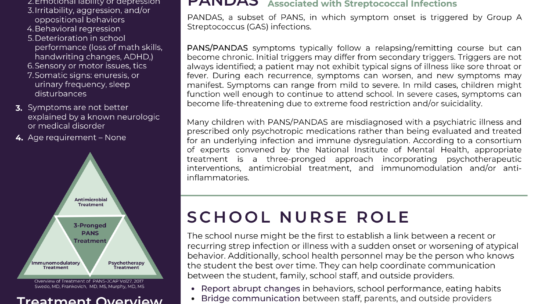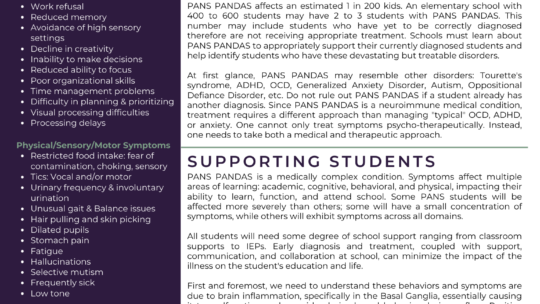Clinical Features in Patients With PANDAS/PANS and Therapeutic Approaches: A Retrospective Study
Rea I, Guido CA, Spalice A. Clinical Features in Patients With PANDAS/PANS and Therapeutic Approaches: A Retrospective Study. Frontiers in Neurology. Vol. 12, 2021. DOI=10.3389/fneur.2021.741176
- 62 patients with a clinical diagnosis of PANDAS/PANS.
- 15 with PANS. 47 with PANDAS
- Mean age at onset of PANDAS/PANS symptoms was 6.2 ± 1.2 years
- 6.2 for PANDAS. 6.0 for PANS
- Neurological and psychiatric symptoms were mostly evident in both groups with little difference
- 93.5% had vocal tics
- 79% had OCD
- PANS kids had more irritability, aggressivity, and food restriction
- PANDAS kids had 10 times higher levels of anti-streptolysin O and anti-DNAse B
- PANS kid had a higher percentage of metabolic disorders
- Psychotherapy significantly relieved OCD the most and reduced stress in patients and parents
- Antibiotic prophylaxis was the most frequently used (90%) for acute neurological symptoms



